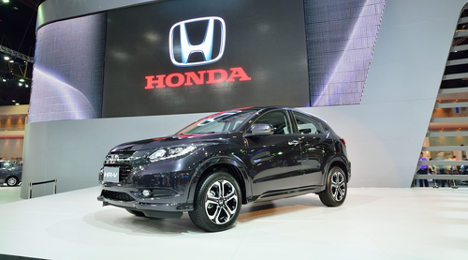Subcompact SUV, crossover marketing takes aim at Gen Y

Frost & Sullivan predicts that manufacturers of subcompact SUVs and crossovers, such as the Honda HR-V pictured, will increasingly target millennials worldwide over the next few years.
By subscribing, you agree to receive communications from Auto Remarketing and our partners in accordance with our Privacy Policy. We may share your information with select partners and sponsors who may contact you about their products and services. You may unsubscribe at any time.
MOUNTAIN VIEW, Calif. –
Manufacturers of subcompact SUVs and crossovers, worldwide, have a specific demographic in mind when marketing these types of vehicles: young adult, educated, entry-level shoppers.
That’s according to a recent analysis by Frost & Sullivan, titled Strategic Analysis of the Global Subcompact SUV and Crossover Market, which presents an analysis of the two areas of significant growth in recent years and its projected continued growth over the next few years.
The analysis reveals that between 2012 and 2014, the market for these two types of vehicles grew by over 40 percent, with worldwide new-vehicle sales of subcompact SUVs and crossovers coming in at 3.2 million units from 62 models in 2014. The firm expects that figure will increase worldwide by 7.4 million units, with 22 additional models, by 2022.
Focusing primarily on millennials aged 18 to 36 years of age, the study predicts that manufacturers will be aiming to sell these vehicles to educated individuals, either single or in couples without infants, who perceive themselves as adventurous urban dwellers who are also seeking a vehicle that is tech-savvy, safe, efficient and optimally spacious. It also has to look good for a reasonable price.
“The key to market success is to provide customers with (a) strategic balance between manufacturer’s suggested retail price/selling price and trendy design cues,” said Sujeesh Kurup, Frost & Sullivan’s automotive and transportation consultant.
The price point is important, as the study reveals that the target demographic will be most comfortable with spending roughly $20,000 for a vehicle in this category, suggesting that those not specifically fixated on purchasing a new vehicle will probably gravitate toward the used-vehicle market if the newest of the new technologies aren’t the pinnacle of their shopping needs.
Subscribe to Auto Remarketing to stay informed and stay ahead.
By subscribing, you agree to receive communications from Auto Remarketing and our partners in accordance with our Privacy Policy. We may share your information with select partners and sponsors who may contact you about their products and services. You may unsubscribe at any time.
The price also affects which makes these young, thrifty shoppers will be looking in, as the study forecasts that there will be more mass-market vehicles than premium vehicles by 2022.
The biggest challenge for this audience will likely be in the area of fuel-efficiency, where the current combined value of miles per gallon is roughly 25 miles per gallon. The firm expects that the combined value of mpg in this area of vehicles to rise to about 30 mpg by 2022.
Kurup also commented on the importance of platform consolidation for manufacturing price streamlining.
“Finding the optimal balance between platform consolidation, lightweighting and vehicle fuel (efficiency) may well prove critical to (an) OEMs’ growth,” Kurup said. “They need to focus on these areas not only to meet their business goals, but also to be able to offer customers a great value proposition.”
To check out the full review from Frost & Sullivan, click here.


